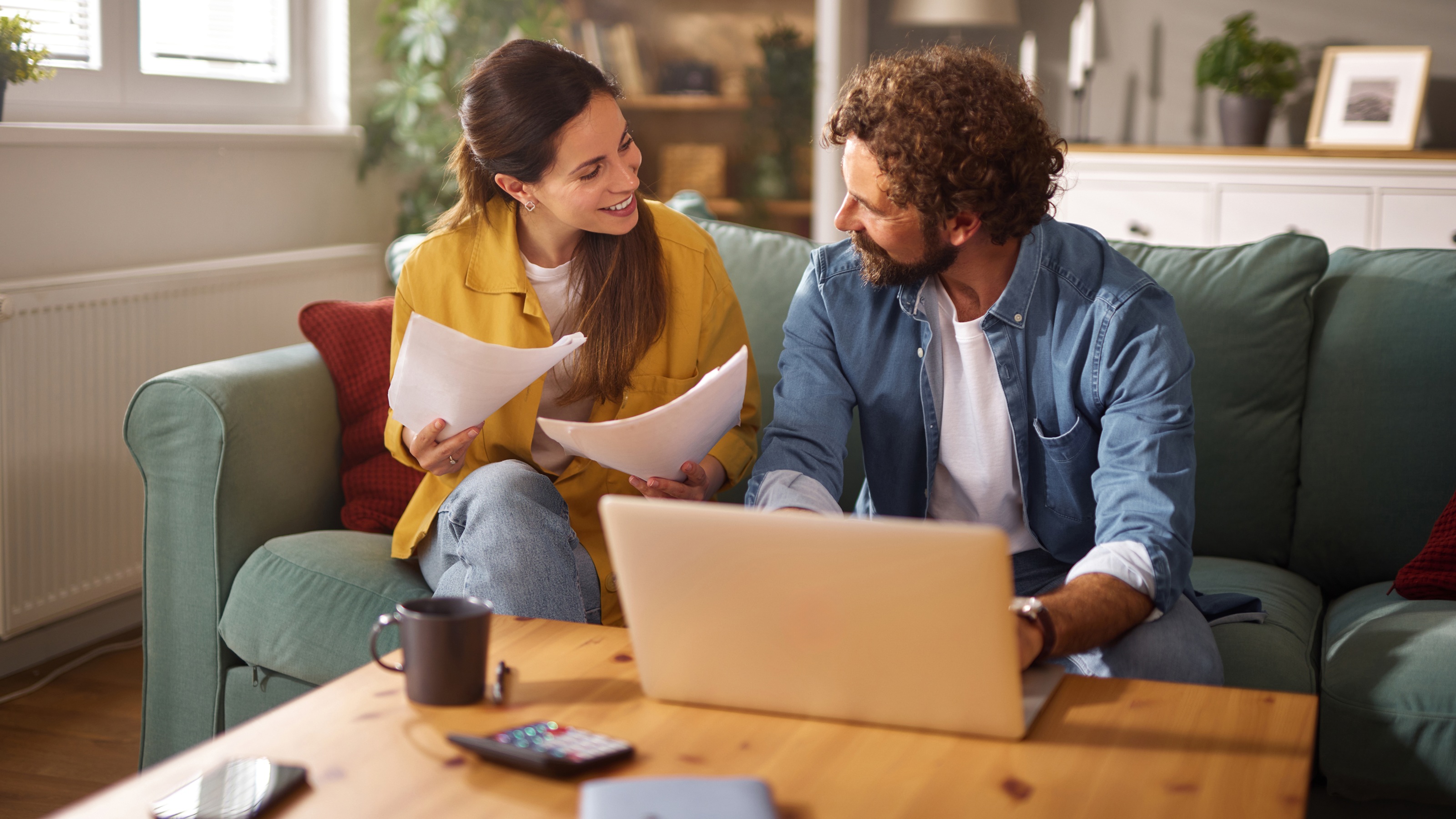This is the Best CD to Get Amid Rate Uncertainty
This CD helps you earn more than 4%, with quick access to your cash if the Fed cuts rates in the future.


My savings strategy is to maximize earnings while having liquidity. After all, you never know what expenses are around the corner, and the last thing you want is to lock up your money in a long-term CD, where you'll have to pay the bank to access it. That's no good.
Arguably, the best option to achieve both is a no-penalty CD. As its name implies, you can store your money away, as no-penalty CD rates earn well above 4%, with access to your cash when you need it.
That way, if the Fed does cut rates sometime this year, you can lock them in when they're still high and have the flexibility to find better investment opportunities if inflation rises.
From just $107.88 $24.99 for Kiplinger Personal Finance
Become a smarter, better informed investor. Subscribe from just $107.88 $24.99, plus get up to 4 Special Issues

Sign up for Kiplinger’s Free Newsletters
Profit and prosper with the best of expert advice on investing, taxes, retirement, personal finance and more - straight to your e-mail.
Profit and prosper with the best of expert advice - straight to your e-mail.
So, what's the catch, and is this the best savings strategy for you to employ? Let's dive in.
How a no-penalty CD can help you
Let's start with the good:
- You'll earn rates as high as 4.34%
- Terms are short, giving you time to pivot investments if the Fed cuts rates
- You'll have access to withdraw some of your cash fee-free
- They're easy to set up
The pros indicate this is a great savings option if you want to tuck away your money for a short time, earn a rate outpacing inflation and have quick access to your cash. Whether you have an upcoming expense you want to earmark some money for or want a risk-free way to diversify some of your savings, a no-penalty CD offers it.
If you're interested in trying one, the tool below powered by Bankrate, can help you compare options from multiple banks quickly:
What to consider with this CD
As its name implies, no-penalty CDs come with the option to withdraw some of your cash should you need it during the term. However, it isn't as flexible as a high-yield savings account when it comes to access.
Usually, you'll need to keep all of your money in the account for at least seven days, up to 30 days with some banks, after funding it. For most savers, this isn't a deal-breaker since the intention is to take advantage of the higher rates of return. And the longer you keep it in, the more you'll earn.
Moreover, some banks and credit unions restrict how often you can withdraw money. Some will only allow you to do it once per month, while others allow you to take it all after the initial holding period.
Another thing to keep in mind is that some banks automatically renew CDs once they reach their maturity date. With this in mind, set a reminder on your calendar or phone a week before it matures, so it gives you time to investigate other options.
If you decide to switch to a high-yield savings account down the road, this tool from Bankrate can help you compare and find a suitable option:
Will the Fed cut rates?
While the future remains murky, some are projecting that the chances of upcoming rate cuts are increasing. Chief among them is Oxford Economics, which states there's an increasing chance of the Fed cutting rates by up to 50 basis points in December.
However, that isn't because the economy will be in a strong place.
"We do see a growing risk that the first move is larger, i.e., 50 basis points, because we think the Fed at that point may have some catching up to do with the labor market," Nancy Vanden Houten, lead U.S. economist at Oxford Economics, told Fortune. Her statement indicates that the tail end of this year could see the Fed coming to rescue a dwindling labor market.
If the Fed cuts, it impacts savers by way of lower rates. The good news is that if you have a no-penalty CD locked in, it won't impact your earning potential.
And you gain access to your cash quicker. That way, if inflation rises, you can pivot and put your money in an investment that could potentially keep you further ahead of rising costs.
Related content
Profit and prosper with the best of Kiplinger's advice on investing, taxes, retirement, personal finance and much more. Delivered daily. Enter your email in the box and click Sign Me Up.

Sean is a veteran personal finance writer, with over 10 years of experience. He's written finance guides on insurance, savings, travel and more for CNET, Bankrate and GOBankingRates.
-
 Dow Adds 646 Points, Hits New Highs: Stock Market Today
Dow Adds 646 Points, Hits New Highs: Stock Market TodayIt was "boom" for the Dow but "bust" for the Nasdaq following a December Fed meeting that was less hawkish than expected.
-
 5 Types of Gifts the IRS Won’t Tax: Even If They’re Big
5 Types of Gifts the IRS Won’t Tax: Even If They’re BigGift Tax Several categories of gifts don’t count toward annual gift tax limits. Here's what you need to know.
-
 The 'Scrooge' Strategy: How to Turn Your Old Junk Into a Tax Deduction
The 'Scrooge' Strategy: How to Turn Your Old Junk Into a Tax DeductionTax Deductions We break down the IRS rules for non-cash charitable contributions. Plus, here's a handy checklist before you donate to charity this year.
-
 The Top 22 Gifts for Grandkids from Walmart in 2025
The Top 22 Gifts for Grandkids from Walmart in 2025From PlayStation to Labubu, you'll find the hottest gifts of 2025 for your grandkids at Walmart this year. Some of them are up to 78% off.
-
 CD vs. Money Market: Where to Put Your Year-End Bonus Now
CD vs. Money Market: Where to Put Your Year-End Bonus NowFalling interest rates have savers wondering where to park cash. Here's how much $10,000 earns in today's best CDs versus leading money market accounts.
-
 Meet the World's Unluckiest — Not to Mention Entitled — Porch Pirate
Meet the World's Unluckiest — Not to Mention Entitled — Porch PirateThis teen swiped a booby-trapped package that showered him with glitter, and then he hurt his wrist while fleeing. This is why no lawyer will represent him.
-
 Smart Business: How Community Engagement Can Help Fuel Growth
Smart Business: How Community Engagement Can Help Fuel GrowthAs a financial professional, you can strengthen your brand while making a difference in your community. See how these pros turned community spirit into growth.
-
 Smart Money Moves Savers Should Make in 2026
Smart Money Moves Savers Should Make in 2026These steps will get you on the road to achieving your 2026 savings goals.
-
 How Much Would a $50,000 HELOC Cost Per Month?
How Much Would a $50,000 HELOC Cost Per Month?Thinking about tapping your home’s equity? Here’s what a $50,000 HELOC might cost you each month based on current rates.
-
 My First $1 Million: Self-Employed Trader, 50, San Francisco
My First $1 Million: Self-Employed Trader, 50, San FranciscoEver wonder how someone who's made a million dollars or more did it? Kiplinger's My First $1 Million series uncovers the answers.
-
 Waiting for Retirement to Give to Charity? Here Are 3 Reasons to Do It Now, From a Financial Planner
Waiting for Retirement to Give to Charity? Here Are 3 Reasons to Do It Now, From a Financial PlannerYou could wait until retirement, but making charitable giving part of your financial plan now could be far more beneficial for you and the causes you support.